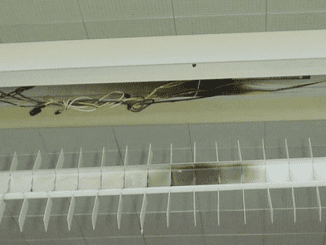
NEW YORK, New York, August 26, 2021 (ENS) – Community groups from across the United States, together with California’s Santa Clara County, have filed a petition with the U.S. Environmental Protection Agency calling on the EPA to regulate lead pollution from smaller aircraft, the largest remaining source of lead emissions in the country.
Thirty-nine organizations and individuals signed a letter petitioning EPA Administrator Michael Regan to look into the issue of lead pollution from the aviation fuel used by piston-engine aircraft.
Leaded aviation fuel is still used in nearly 167,000 piston-engine aircraft across some 20,000 airports in the United States, although the use of leaded gasoline in most motor vehicles was banned 25 years ago. Avgas is country’s only remaining leaded transportation fuel.
Jet aircraft and turbine-powered propeller aircraft do not use avgas, but instead use fuels similar to kerosene, which do not contain lead.
Aircraft operating on leaded avgas are used for all kinds of business and personal travel, instructional flying, aerial surveys, agriculture, firefighting, law enforcement, medical emergencies, and express freight.
The petitioning groups argue that the EPA has failed to regulate this source of lead exposure, even though emissions from these aircraft account for about 70 percent of all the lead released into the atmosphere above the country.
Getting the Lead Out Would Ease Children’s Breathing
In their letter of petition to EPA Administrator Regan, the groups say, “Addressing emissions from leaded avgas will also help the Biden-Harris Administration realize its commitment to environmental justice. The majority of general aviation airports with the highest lead emissions are located in communities of color.”
“Communities of color are already disproportionately burdened by chemical exposures and, in particular, by exposures to lead. Black children have body burdens of lead that are higher, on average, than their white counterparts, both in utero and after they are born,” the petitioners point out.
Lead emissions from activity at these general aviation airports puts the health of Black children at a disadvantage when they live and attend school near an airport servicing piston-engine planes. Over 160,000 children attend schools near these airports.
The petitioners cite research showing that children who live in close proximity to airports where piston-engine aircraft operate have higher blood lead levels relative to those who do not, putting them at a greater risk of harm associated with lead exposure.
Why Is Avgas Still Leaded?
“Lead in avgas prevents damaging engine knock, or detonation, that can result in a sudden engine failure,” explains the U.S. Federal Aviation Administration, FAA, on its website.
Piston-powered aircraft most commonly use 100 octane low-leaded fuel, 100LL, and fly at altitudes below 15,000 feet.
When leaded gasoline for use in on-road vehicles was completely phased out as of January 1, 1996, general aviation’s need for a high-octane fuel to power high-compression piston engines required avgas makers to add tetraethyl lead before delivery to prevent detonation.
Almost all avgas on the U.S. market today is low lead, 100 MON avgas (100LL). This grade satisfies the requirements of all piston engines using avgas, regardless of their performance level. Even the particular mixtures in use today are the same as when they were first developed in the 1940s.
The FAA says it shares the Environmental Protection Agency’s concerns about lead emissions from these smaller aircraft, acknowledging that “lead is a toxic substance that can be inhaled or absorbed in the bloodstream.”
Currently the FAA, the EPA and the industry are partnering in attempts to remove the lead from avgas.
To help “get the lead out,” FAA is supporting the research of alternate fuels at the agency’s William J. Hughes Technical Center in Atlantic City.
The FAA says it is working with the aircraft and engine manufacturers, fuel producers, the EPA and industry associations to overcome technical and logistical challenges to developing and deploying a new, unleaded fuel.
Avgas has a higher octane rating than automotive gasoline to allow higher compression ratios, power output, and efficiency at higher altitudes. The FAA, fuel suppliers, and aerospace manufacturers are working on the development of high octane, unleaded fuel formulations.
The goal of these efforts is to identify fuel formulations that are operationally safe and less toxic than leaded avgas.
Shell Global is involved in the work to develop an unleaded alternative fuel for piston-engine aircraft. For a technical discussion of octane and lead in aviation fuel click here. https://www.shell.com/business-customers/aviation/aeroshell/knowledge-centre/technical-talk/techart12-30071515.html
As yet there is no firm date for replacement of leaded aviation fuel, but Shell predicts “there can be little doubt that eventually Leaded Avgas will be withdrawn from use. However this does not seem likely until suitable fully developed alternatives are available; a situation that is likely to be several years into the future.”
Featured image:



